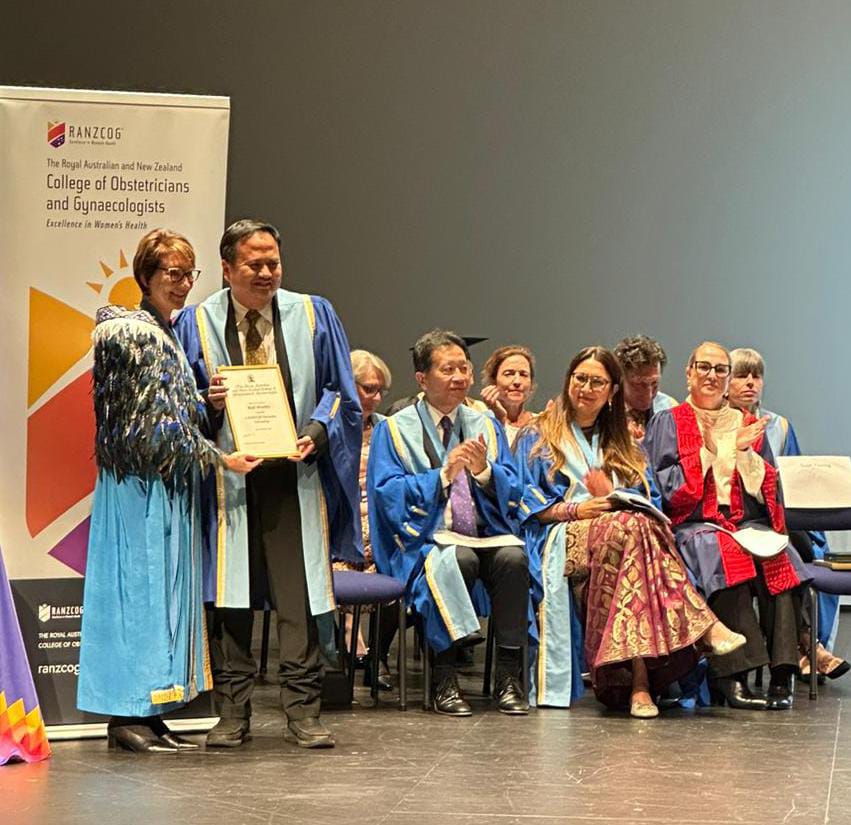
East Asia is the eastern region of Asia defined in geographical and ethno-cultural terms. Modern East Asian countries including China, Japan, South Korea, North Korea, Taiwan, and Mongolia, have their own dynamics that are interrelated regionally and globally. The term East Asia became popular after it was first used in European geopolitical discourse in the 15th century, especially in England, which called it the Far East. It shows the far east as the “furthest” of the three “easts”, outside of the Near and Middle East.
The topic of East Asia is an interesting subject today. The reason, according to Dr. Adrianus Laurens Gerung Waworuntu, S.S., M.A., former dean of the Faculty of Humanity, Universitas Indonesia (FIB UI) and lecturer at the China study program, “Today, East Asia is home to some of the most prosperous economies in the world, a phenomenon of several The fastest growing developing country in the world, with a favorable political-legal environment for industry and commerce, abundant natural resources, and a highly determined adaptable workforce are the main factors for the progress of their respective countries.”
The discussion on East Asia was revealed in a webinar entitled “The Dynamics of East Asian Interconnectivity”. According to the Head of the Regional Department of FIB UI, Dr. Rahadjeng Pulungsari Hadi, M.Hum., the webinar was held for the good cooperation between the East Asia Study Program, FIB UI Regional Department and the first batch of students from the East Asia Postgraduate Study Program. This event took place online and was broadcast through the Masters East Asia FIB UI youtube channel.
“East Asia Study Program is a new study program with a mission to develop knowledge and insight about East Asia. Experts from Chinese, Japanese, Korean study programs also joined in sharing their views according to their expertise,” said Rahadjeng. The East Asia study program just opened in February 2021, approximately one year ago.
According to Adrianus, East Asia study program is a place for teaching and researching about Chinese, Japanese, and Korean cultures, as well as their interactions with the rest of the world. An emphasis is placed on interregional and interdisciplinary work, including in the fields of history, literature, philosophy, cinema, and cultural studies in modern and premodern times.
The religious system in East Asia consists of Confucianism, Taoism, Buddhism, and Shintoism. The region has a Sino-Tibetan, Austronesian, Altai, Japanese, and Koreanic language family. Interconnectivity, communication, and interaction in East Asia are characterized by different and interesting political systems. When viewed from the economic aspect in 2021, the largest Gross Domestic Product (GDP) in the world are the United States, China, Japan, Germany, Britain, India, France, Italy, Canada, and South Korea.
Furthermore, Bachtiar Alam, Ph.D., a lecturer in the Japanese study program FIB UI, explained the basics of research methods in Japanese or East Asian studies. One of the important requirements of a scientific work is to have theoretical implications. A collection of data or facts does not necessarily become a scientific work, even though the data are objective, systematic, and collected using the scientific method. When referring to the applicable provisions, the Final Project and Thesis must provide “contribution or relevance of research to thestate of the artscience related to novelty or novelty” (Regulation of the Dean of Faculty of Humanity Universitas Indonesia (FIB UI) No. 2419/2019).
Theoretical implications are conclusions related to certain theories that have developed in a particular discipline. It is obtained through data collection and analysis and is described from research findings. Meanwhile, a theory is a general statement about a concept or the relationship between concepts in a particular discipline. Theoretical implications are a bridge between the findings of humanities and social science research and theories that have developed in these disciplines.

According to FIB UI Education Manager Rouli Esther, Ph.D., “I hope that during today’s webinar lecture, you and all the participants can get insightsand additional knowledge from our two experts, Mr. Adrianus and Bachtiar Alam. Representing the faculty, we strongly support the existence of webinars like this and the development of the next East Asia master program,” he said.



